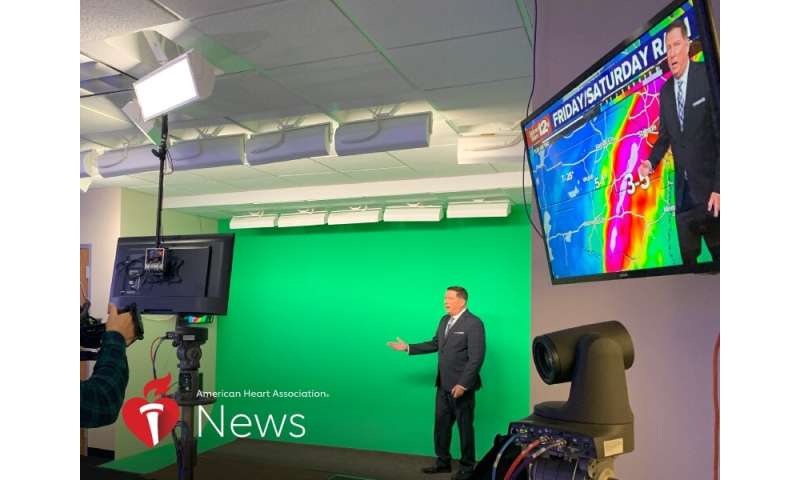After three heart attacks, meteorologist hopes for clear skies ahead

Meteorologist Mark Larson was preparing for his noon television show in Wichita, Kansas, when he started to feel foggy and fatigued. Out of nowhere, sharp pain stabbed the inside of his left elbow.
He knew he was in no shape to appear on air and went to tell the news director, who immediately noticed Larson’s pasty skin and pained expression.
“Sit down and put your feet up,” the news director said. “You’re having a heart attack.”
At the hospital, Larson learned he had major blockages in two arteries. A stent was inserted into each to increase blood flow to the heart.
After he recovered, “I felt like Superman,” he said. “I hadn’t felt that good in months.”
Looking back, he realized there had been signs something was wrong.
Like the marathon he’d run six months earlier. It was his third, but the first he’d struggled to complete.
“My wife ended up running 6 miles with me that day just to keep me going,” he said. “In hindsight, it wasn’t the smartest thing to finish.”
He also remembered napping more, feeling dizzy after walking up stairs and being generally cranky.
Although Larson led an active lifestyle and usually maintained a healthy weight, he had a family history of heart disease.
Just a year before, his 63-year-old father, who had high blood pressure, died from a heart attack. His mother, who also had hypertension as well as a replaced heart valve, died in her 70s from a suspected heart issue. His grandfather also died in his 70s from stroke complications.
His cardiologist, Dr. Ravi Bajaj, said Larson’s heart had suffered no permanent damage but issued a warning: “You have a healthy heart, but this may happen again.”
The doctor was right.
Since his first heart attack in 2000, there was a second in 2010 and a third in 2017. The whole time, Larson has maintained a healthy lifestyle and taken medication to help prevent blood clots.
While being in good shape helped him pull through each heart attack and sped his recovery, the unfortunate reality was that he couldn’t out-diet and out-exercise his genetics.
The second heart attack happened just after he’d played a game of basketball in a hot gym during the summer.
“The whole family was out of town, and when I got home I had such an excruciating pain in my chest that I had to crawl from the car in the garage into the house,” he said. He managed to call 911. At the hospital, another stent was put in place.
A fourth stent was implanted three years ago, after the heart attack he considers his most serious.
“I’d been to the gym, but was feeling really tired and couldn’t finish my sets,” he said.
When he got home, he called his wife to say he knew something was wrong. She rushed home from work and found him on the floor with no discernable pulse. She ran to their firefighter neighbor, who tended to him and called 911.
Now 61, Larson said his cardiologist grades him at an “A-minus.”
“He gives me a minus because he wants me to keep working,” he said. “He says, ‘Do the things you can and the rest you just have to deal with as it comes.'”
Larson, who plans to retire next year, said his faith and his family—he and his wife have three grown children—have kept him optimistic.
“I would be lying if I didn’t say that if I swing the (golf) club too hard and my shoulder is hurting, I might think, do I need a massage or do I need a cardiologist?” he said. “But I’ve chosen not to get morbid or depressed about it. Honestly, it’s harder on my kids and relatives.”
While his children might worry about him, he’s also aware that his only biological son, Wayne, must be proactive to monitor his heart health because it is “in his gene pool.”
At 32, Wayne has long been careful with his diet and exercises frequently. He also goes for regular checkups and went over his family history with his doctor.
“My doctor says I’m as healthy as I can possibly be, so I trust that,” he said.
Source: Read Full Article
